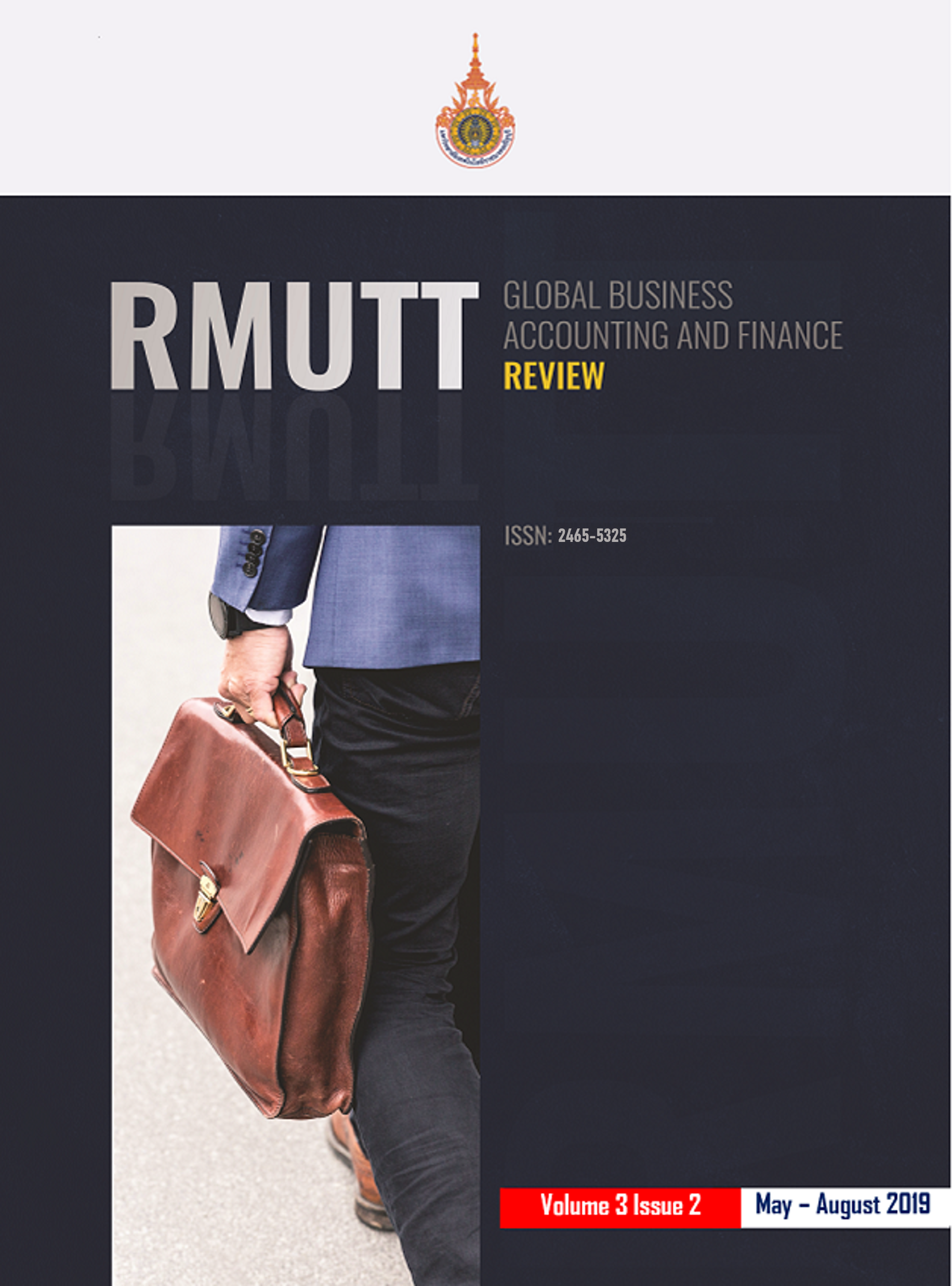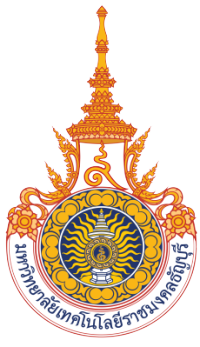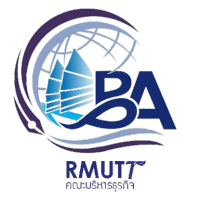CHALLENGES OF COMPETING IN THAI DURIAN MARKET IN CHANTABURI PROVINCE IN THE AGE OF "CHINESE CONSUMERISM"
Abstract
The research in the challenges of competing in Thai durian market in Chantaburi province in the age of "Chinese consumerism" is aimed to 1) study general information, farmer characteristics, marketing mix factors and competitive advantage, 2) compare the competitive advantage of the durian market in Chantaburi Province categorized by general information, 3) compare the competitive advantage of the durian market in Chantaburi Province categorized by farmer characteristics and 4) study the marketing mix factors affecting competitive advantage of the durian market in Chantaburi Province categorized by farmer characteristics. Questionnaires were used as tools for collecting datafrom 400 durian growers in Chantaburi Province. Descriptive statistics was used for population data. Inferential statistics; ANOVA Test, Multiple Regression Analysis, was used for data analysis. The results show that 61.30% of the respondents are male. 37.8% are over 35 years old. 30.80% obtain the level of education in secondary school and vocational certificate. 35.70% have more than 1 million Baht annual income. 42.00% of the durian plantation areas are sloping areas. 27.70% or the majority of the durian cultivated are Mon Thong. Sales, profits and production in 2018-2019 were reduced from 2017 55.30%, 63.70% and 52.50% respectively. The results of the testing showed that differences in education levels, annual income, characteristics of durian plantation areas, durian varieties affect the competitive advantages of Thai durian market in Chantaburi Province differently. According to multiple regression analysis results, the predictive power is 12.00%(R2 = 0.12), the standard error of the forecast is 0.528%. The best forecasting variable affecting the competitive advantage of the Thai durian market in Chantaburi Province with statistical significance at the level of 0.05 are four variables. Price (X2) and workers in the plantation (X6) give a positive effect, whereas the durian plantation area factor (X5), marketing promotion (X4) give a negative effect. The variables that do not affect the competitive advantage are the product (X1) and the distribution channel (X3). The study shows that the sample places a high level of importance on product strategy; therefore, farmers should increase the variety, and the quality of durians more than price strategy. The price should be set appropriately, and the distribution channel should be increased to reduce the risk from the bargaining power of the durian buyer.
References
Anthachai, S. (2015). Concepts and theories of Marketing mix strategy. Bangkok. http://thesis.swu.ac.th/swuhesis/Man/Titapa.pdf. Retrieve on 5 May 2019.
Benjapruek, S. (2019). Thai durian with challenges that should not be overlooked Bank of Thailand. From https://www.bot.or.th/Thai/MonetaryPolicy/Southern/Reasearch Paper/Challenging_of_Durian.PDF
Detphuang, N. (2018). The relationship between internal and external factors affecting durian exports to the People's Republic of China. https://www.tci-thaijo.org/index. php/EAUHJSocSci/article/view/16451. Retrieved on 5 May 2019.
Kaewchamnong, A. (2012). Organization with quick responses to customer needs http://digital_collect.lib.buu.ac.th/dcms/files/56710243.pdf. Retrieve on 5 May 2019.
Naweekarn, S. (2016). Competitive advantage. www.mcutak.com. Retrieve on 5 May 2019.
Office of Agricultural Economics. (2015). Agricultural Economic Information. Retrieve on 5 May 2019. From http://oae.go.th/ /ewtadmin/ewt/oae_web/download/download_journal/2559/commodity58.pdf.
Panyaruang, K. (2016). Strategies of competitive advantage towards the success of operations based on the concept. Suphanburi Province. http://ithesis-is.su.ac.th/ddsfpace/bitstream/01-%.pdf. Retrieved on 5 May 2019.
Panyasai, W. (2017). Development of needs of Long-Lublae durian business lesson for agricultural entrepreneurs in Uttaradit Province. Retrieved on 5 May 2019. From https://www.tci – thaijo.org/indedx.php/uruj/article/view/99254.
Porter, M. E. (1985). Competitive Advantage Creating and Sustaining Superior Performance. New York: The Free Press.
Serirat, S. (2016). Marketing Promotion. Retrieve on 5 May 2019. From http://marknghai.blogspot.com/2010/blog-post.html.
Wheelen and Hunger. 2016. Marketing mix. Retrieved on 5 May 2019. From http://www.chulapedia.ac.th/index.php?title.









